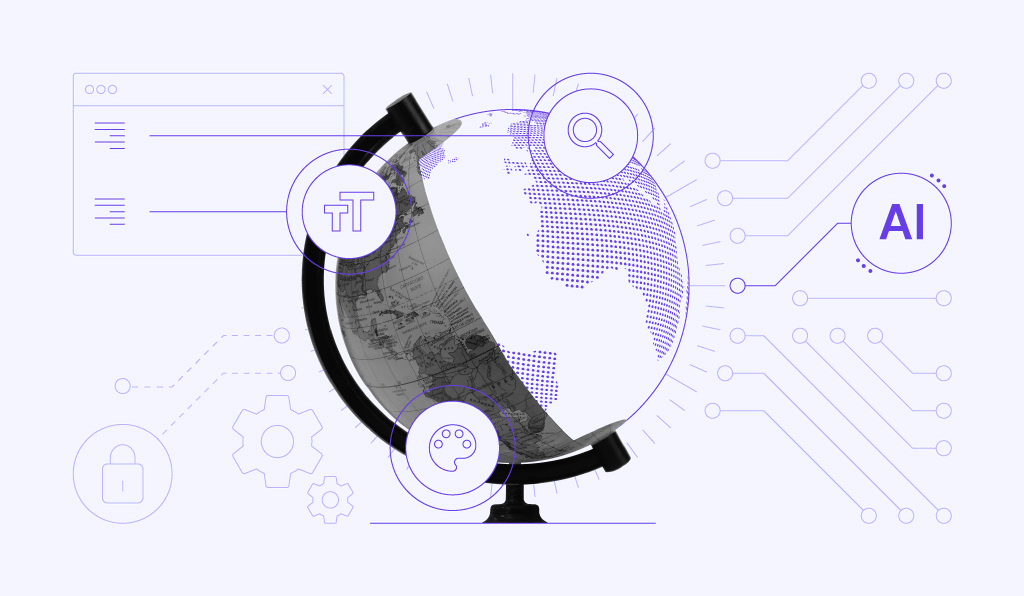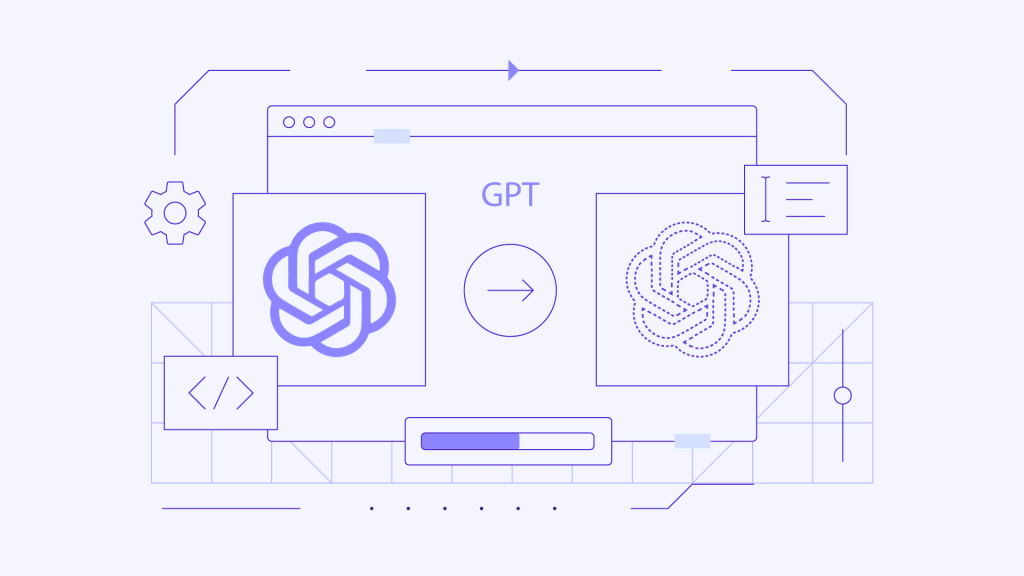27 AI Statistics and Trends in 2024

Artificial Intelligence (AI) has rapidly transformed various aspects of our lives, offering unprecedented advancements in technology, from deep learning tools to new product creation and task automation.
In this article, we’ll discuss 27 top artificial intelligence statistics and upcoming trends. These include AI adoption, investment in the global AI market, and AI’s effect on the job market, ethics, and bias.
Top Artificial Intelligence Statistics
In this section, we’ll reveal the scope and impact of AI technology and offer insights that can guide both business strategies and individual career paths.
1. The Global AI Market Size Is Expected to Grow 37% Every Year From 2023 to 2030
With an expected compound annual growth rate of 37.7%, it’s clear that the AI market is growing exponentially, signaling the technology’s growing importance across all industries.
For businesses, this points to adopting AI solutions for a competitive edge. For example, AI-powered virtual assistants can help increase efficiency and save costs.
Individuals, on the other hand, can benefit from acquiring AI-related skills. Understanding AI systems, data analytics, and machine learning principles gives a significant career advantage in the long run.
2. Over 40% Of Business Leaders Report Increased Productivity Through AI Automation
AI tech isn’t just hype – it will stay, at least as a helpful tool. AI usage in automation helps with repetitive tasks, letting you focus on more complex and creative tasks.
For business leaders, adopting AI-driven automation leads to immediate gains in productivity. For employees, understanding how to work alongside AI tools can make you an indispensable asset to your organization.
3. Artificial Intelligence Is Expected to Create 133 Million New Jobs by 2030
Many believe that AI systems can disrupt the job market. However, artificial intelligence statistics show the opposite – machine learning and AI technology can create many new jobs in various fields, from IT to the retail industry.
For job seekers and professionals, gaining some level of AI literacy can open doors to new career opportunities that have not existed before. For example, thanks to AI in customer service, you might have to teach chatbots to be more fun.
4. AI Will Contribute Over $15 Trillion to the Global Economy by 2030
These AI growth statistics prove that machine learning investment is highly profitable. Business owners should be investing in AI initiatives if they want to stay ahead of the competition.
For individuals, this means that virtually every industry will implement AI. Staying on top of AI usage in your field – be it agriculture, finance, or the manufacturing industry – can provide you with valuable insights to make smarter career choices and investment decisions.
5. Interest in AI Website Builders Has Grown 50% in Previous 12 Months
AI assistants have become increasingly popular in web design practices.
From streamlining the development process to producing unique, SEO-friendly content, AI website builders have made web development available for everyone. In 2023 alone, searches for AI website builders have reached an all-time high, indicating that AI-driven innovation in the field is growing.
For example, Hostinger Website Builder is an AI platform that enables you to create a highly functional and visually pleasing website in just a few minutes.
Growth of AI Adoption
Leading businesses invest in the adoption of artificial intelligence in their operations to boost efficiency, solve complex problems, and improve customer experience.
Let’s go over artificial intelligence statistics that demonstrate the speed and scope of this global AI adoption rate.
6. Deployed AI Adoption Is Over 40% in China and India
The wide adoption of machine learning and AI indicates that businesses in these regions are capitalizing on AI to drive innovation and efficiency.
For companies operating or considering expansion into these markets, understanding local AI capabilities offers a competitive advantage. For professionals, the growing artificial intelligence landscape in these countries suggests career opportunities in AI-related roles.
7. 25% Of Companies Have Adopted AI to Address Labor Shortages
Labor shortages can critically impact a company’s performance, and this statistic reveals that every fourth company is using AI to solve this issue.
This ranges from automating routine tasks to predictive hiring. For businesses, it provides a viable strategy for managing workforce gaps. For individuals, this can mean that the future work environment will increasingly involve AI tools, making a basic understanding of AI and machine learning an asset.
8. 33% Of All AI Adoption Cases Focus on the Automation of IT Processes
Automation of IT processes represents a significant chunk of AI technology, simplifying complex tasks like data management and cyber security.
For IT professionals, this signals a shift in job roles and responsibilities as certain tasks become automated. Keeping up-to-date with these automated processes is essential for career longevity.
AI Investment and Funding
Artificial intelligence has become a sector attracting massive financial investments. With substantial capital flowing into AI startups and projects, understanding the investment landscape is essential for stakeholders, entrepreneurs, and professionals alike.
The following top AI statistics reveal key trends and hotspots in AI funding.
9. Global AI Funding Reached $45 Billion in 2022
It’s clear that the market’s trust in artificial intelligence is increasing.
For business owners, this number signals that the time for innovation in AI technology is now, with ample funding available. For professionals working in the AI market, high investment levels often equate to job security and opportunities for career growth.
10. The Top Countries for AI Investment Are the United States and China
The bulk of AI investments are concentrated in these two global powers, indicating both market maturity and available resources for AI development.
For businesses looking to launch or invest in AI projects, focusing on these countries can offer strategic advantages. Individuals should note that the U.S. and China will be hubs for AI-related job opportunities, whether in research, development, or application.
11. AI Startup Funding Has Increased on Average by 66% Between 2021 and 2023
The sharp increase in funding for AI startups within just two years is a testament to the accelerating pace of innovation and market demand.
For aspiring entrepreneurs, this trend suggests a conducive environment for launching new ventures in the AI space. For investors, the surge in funding points to a potentially lucrative market – however, a deep understanding of the technology helps to make wise investment choices.
AI Job Market Trends
As artificial intelligence becomes more integrated into businesses and services, the need for professionals skilled in AI is escalating. Here are some top AI statistics that reveal this growing demand and what it means for employment and skill development.
12. The Demand for AI Skills Is Outpacing the Supply of AI Talent
There is a clear gap between the demand for AI skills and the current availability of talent.
For businesses, this suggests that attracting and retaining AI-skilled workers will become increasingly competitive. For individuals, the AI talent shortage signals a lucrative opportunity – acquiring AI skills means job security and career advancement.
13. The Average Salary for AI Professionals Is $160,000
The high average salary for AI professionals highlights the premium that businesses are willing to pay for these specialized skills.
For workers, this indicates that upskilling or reskilling in global AI technologies can be a wise career move, potentially leading to higher earning potential.
14. By 2030, 30% Of Work Hours Across the US Economy Could Be Automated With AI
Implementing AI leads to increased productivity and automation of various business processes and tasks.
Thanks to AI implementation, more time and effort can be dedicated to more creative and strategic tasks. Often, these tasks require more human input, resulting in a better allocation of business resources.
AI in Automation
With its capabilities to optimize processes, boost customer experience, improve efficiency, and provide predictive insights, AI has become a game-changer for various industries. Here are some artificial intelligence facts that demonstrate the current and future impact of AI in automation.
15. Over 95% Of Executives Agree That Generative AI Will Revolutionize Where and How AI Is Used
Generative AI represents a breakthrough in how you can apply the technology, extending its use beyond simple data analytics to new data generation and simulations.
Companies should consider how generative AI could be applied in their operations and business strategy, be it in product design, supply chain management, or customer engagement.
16. Banking, Financial Services, Insurance, and Healthcare Sectors Have the Biggest AI Market Share
The most substantial impact of artificial intelligence, at least in terms of market share, appears to be in data-intensive and highly regulated sectors.
For businesses in these sectors, using AI gives a competitive edge and helps meet regulatory requirements more efficiently. For those considering a career shift or specialization, these sectors present promising opportunities for AI-related roles.
17. American Companies Dominate When It Comes to Industrial Automation With AI
The dominance of American companies in industrial AI automation indicates the country’s innovation ecosystem and supportive policies. This is especially important for investors who focus on American AI ventures and job seekers who consider the U.S. as a lucrative market for AI-related career opportunities.
For entrepreneurs, these AI stats encourage them to adopt AI automation in their organization if they wish to gain a competitive edge in the market.
Natural Language Processing Advancements
Natural Language Processing (NLP) is a technology that enables computers to understand, interpret, and use human language.
With many advancements in this field, we see increased applications from AI-powered voice assistants and smart speakers to text analytics. The following artificial intelligence stats unveil the scale and implications of this groundbreaking technology.
18. The NLP Market Is Expected to Be Worth Over $40 Billion in 2025
The market size of NLP has been rapidly growing, and it will most likely be over 14 times larger by 2025 than in 2017.
This projected growth of the NLP market illustrates its increasing integration into various industries, from the retail industry to healthcare. For businesses, this is an opportunity to invest in NLP technologies to gain a competitive edge in their field.
19. The Smart Speaker Market, a Segment of the AI Market That Relies Heavily on NLP, Should Be Worth $26 Billion by 2027
AI voice assistants like Siri and Alexa, alongside smart speakers like Google Home, have become household names for NLP technologies. The market value indicates not just consumer acceptance but reliance on these devices for tasks ranging from setting reminders to home automation.
For developers and entrepreneurs, this suggests an expanding arena for NLP applications beyond basic voice commands.
20. There Are Over 1800 NLP Companies in the World
Both startups and public companies in the software industry develop NLP and use it with various projects, from business productivity tools to data analytics and AI telecommunications.
The sheer number of companies engaged in NLP development signals a diversified and competitive landscape. This offers many options for business owners looking for specialized NLP solutions.
For job seekers, the growing number of NLP companies indicates a broad range of potential employers, spanning multiple sectors and specialties.
21. NLP Is One of the Most In-Demand Skills in the Job Market
It’s safe to say AI knowledge is a big advantage when looking for a new job. The high demand for NLP skills reflects its widespread application across industries.
For professionals, this presents an immediate opportunity to upskill, making them more marketable and versatile in a rapidly evolving job market and global workforce.
Regulation, AI Ethics, and Bias
When it comes to AI challenges and risks, the need for ethical considerations and regulatory oversight emerges. From bias in AI algorithms to underrepresentation in research, ethical AI development is becoming increasingly important.
Let’s discuss some interesting artificial intelligence facts that highlight these issues.
22. Over 60% Of Americans Are Concerned About AI Bias and Potential Discrimination During the Hiring Process
The public perception of AI in the U.S. shows that ethical AI is not just a niche concern but a mainstream issue. To begin with, people are afraid that AI technology might be biased.
For policymakers and companies, this signals strong public backing for AI regulation and guidelines ensuring equitable AI practices.
23. A Healthcare Algorithm Was Less Likely to Recommend Necessary Medical Treatment to Black Patients
This study highlights the potentially life-threatening consequences of biased healthcare AI applications.
For healthcare providers, this is a reminder not to trust AI tools fully. For patients, it emphasizes the importance of advocating for equitable healthcare and seeking a second opinion when doctors are using AI.
24. Women Solely Publish Only 11% Of Global AI Research
The lack of diversity in AI research can perpetuate biases and limit the technology’s applicability. For academia and the tech industry, this statistic should serve as a wake-up call to foster more inclusive environments, which can lead to more comprehensive and equitable AI solutions.
Future of AI Technology
In the next five years, the business world expects to see an even bigger shift towards a more defined AI strategy.
As we look to the near future, businesses and professionals alike need to prepare for a landscape where artificial intelligence plays an increasingly pivotal role. The following AI statistics underline the future trajectories of AI trends.
25. The Artificial Intelligence Industry Is Expected to Be Worth $190 Billion by 2030
The anticipated market value of the AI industry suggests that it will spread across sectors.
This means that businesses, regardless of their size or industry, need to think about integrating AI into their operational and strategic plans. For individuals, it means that understanding AI is becoming a necessity in everyday life and at work.
26. Increased AI Adoption and Digital Access Will Drive Job Growth in Over 50% Of Surveyed Businesses
Rather than eliminating jobs, adopting artificial intelligence can stimulate job growth in more than half of the businesses surveyed. This is a sign for both companies and employees to embrace AI technologies – not just as a tool for efficiency but as a driver for job creation and economic growth.
27. 50% of Surveyed Companies Plan to Invest in On-The-Job and Internal Training Departments Related to AI Adoption
The emphasis on internal training underscores that as AI becomes more prevalent, the skills needed to work with it become increasingly valuable.
As a result, companies are investing in upskilling their workforce. For individuals, this presents an opportunity to engage in lifelong learning, enhancing their employability and career prospects in an AI-driven world.
More on AI
AI in eCommerce
Best AI Content Generators
Top AI Web Development Tools
AI for Websites
Best AI Chatbot Options
Best Large Language Models
AI Prompt Engineering
Sources
- Grand View Research
- PwC
- McKinsey
- IBM
- CB Insights
- Tortoise
- Startups
- CIO
- Glassdoor
- GlobalData
- Statista
- Crunchbase
- Upwork
- Pew Research Center
- BMJ
- OECD.AI
- World Economic Forum
- Exploding Topics
Conclusion
The AI market’s anticipated value of $190 billion by 2025 reveals that artificial intelligence isn’t just for tech companies anymore – adopting artificial intelligence is important for every business.
Most importantly, emerging AI technologies will be significant job creators.
For businesses, most artificial intelligence statistics suggest that embracing artificial intelligence means staying competitive. For professionals, on the other hand, continuous learning and adaptability are key to thriving in the modern business environment.
AI Statistics FAQ
Find answers to some of the most commonly asked questions about artificial intelligence trends and statistics below.
What Is the Current State of AI Adoption Across Industries?
Artificial intelligence (AI) adoption is growing across industries. In 2023, 35% of companies are using AI in their business. The industries with the highest AI adoption rates include financial services, healthcare, retail, and manufacturing. They use AI platforms and tools to automate tasks, improve workflows, and create new services and products.
How Much Investment Has AI Technology Received in 2023?
The global AI market has received billions of dollars in 2023 from venture capital firms. They invest in new products and services, as well as startups and already-established companies.
What Are the Key AI Skills in Demand in the Job Market?
The key AI skills in the job market include data science, machine learning, natural language processing, and computer vision. These skills are in high demand because they are essential for developing and deploying AI solutions.
What Challenges Does AI Face in 2024?
Data privacy in AI is the biggest challenge the technology faces. Besides that, users complain about bias, privacy and security concerns, interpretability, and overall technology regulation.




